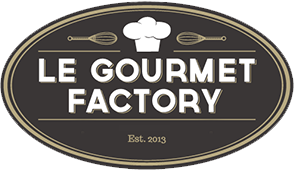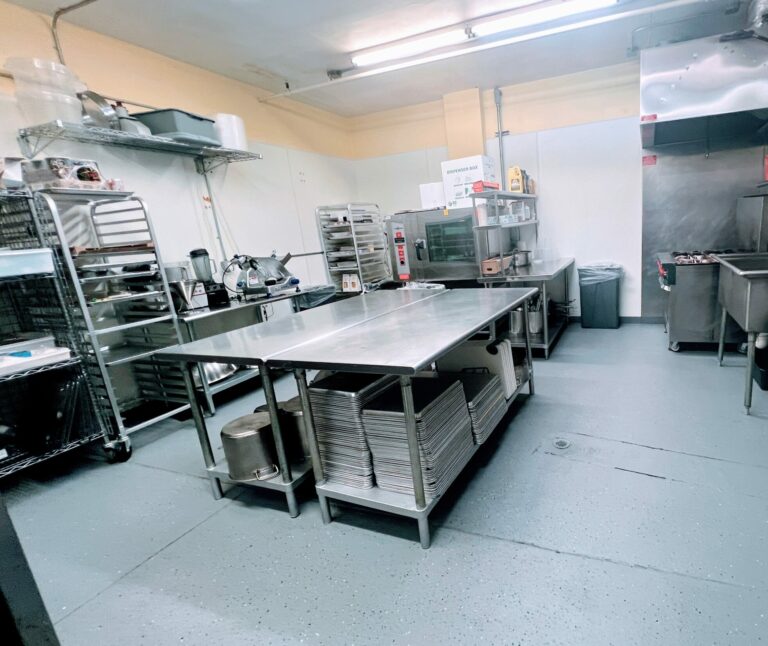Managing Operations
Learn effective strategies for managing operations in a ghost kitchen, from inventory control to streamlining workflows for a successful food business.

Continue exploring the next articles in this series:
Discover essential equipment and setup tips for ghost kitchens, from must-have appliances to layout strategies for efficient, high-quality production
Or navigate back to explore other related content :
Ready to grow your food business? Learn how operating from a ghost kitchen helps caterers, bakers, and meal prep services…
01: Introduction
Efficiently managing a ghost kitchen or small food business requires a blend of organization, marketing, and growth strategies. Whether you’re figuring out kitchen requirements for home baking business operations or looking to promote catering business services, this guide will walk you through key steps for streamlined operations, effective promotion, and sustainable growth.
02: Essential Kitchen Requirements for Home-Based Food Businesses
For home bakers and small food entrepreneurs, understanding kitchen requirements for home baking business compliance is crucial. Many regions require home-based food businesses to meet specific health and safety standards to operate legally. Requirements may include:
- Dedicated Food Prep Areas: Many health departments require a separate area for food prep that’s away from home cooking spaces.
- Proper Storage Solutions: Adequate storage for ingredients and finished products helps maintain food safety.
- Sanitation and Safety Protocols: Regular sanitization, proper labeling, and adherence to health codes are essential. Home bakers may need to secure food handler’s permits or similar certifications.
- Equipment Requirements: Specialized equipment, such as commercial-grade mixers or ovens, may be necessary for scaling production.
Meeting these requirements is essential for home-based baking businesses looking to operate legally and grow.
03: Running a Successful Ghost Kitchen or Cupcake Business
When managing a food business, streamlined operations are key. Here are some tips for those wondering how to run a cupcake business or manage a ghost kitchen:
- Develop Efficient Workflows: Create a step-by-step production plan, from ingredient prep to packaging, to maximize time and reduce errors.
- Use Technology for Order Management: Digital tools like online ordering systems, delivery apps, and scheduling software can simplify order processing and improve customer satisfaction.
- Monitor Inventory Closely: Track ingredient levels to avoid shortages and reduce waste. Keeping a well-organized inventory ensures consistent quality and cost control.
- Optimize Delivery Routes: For delivery-only ghost kitchens, optimizing delivery routes reduces costs and improves customer satisfaction by shortening wait times.
For a successful cupcake or ghost kitchen business, maintaining efficiency and consistency is key to building a loyal customer base and growing the business.
04: Strategies to Promote Your Catering Business
Effective promotion is essential for food businesses, especially catering, which relies on event-based engagements. If you’re learning how to promote your catering business, consider these strategies:
- Social Media Marketing: Platforms like Instagram and Facebook allow you to showcase food photos, customer testimonials, and event highlights.
- Collaborate with Local Venues: Partnering with event venues can increase exposure, as many customers seek recommendations from venues.
- Online Reviews and Testimonials: Encourage happy clients to leave reviews online, as testimonials boost credibility and attract new clients.
- Networking Events: Attend local business networking events or food festivals to connect with potential clients and business partners.
- Promote Catering Business with Paid Advertising: Online ads, especially on platforms like Google or Yelp, can help attract local clients looking for catering services.
A strong online presence and community connections are essential for building brand visibility in the catering market.
05: Tips for Growing a Catering Business
Once you’ve established a client base, knowing how to grow a catering business is the next step. Here are some proven strategies:
- Expand Your Menu Offerings: Cater to new dietary trends or popular requests to appeal to a broader audience.
- Offer Package Deals for Events: Providing bundled packages for events like weddings or corporate gatherings can increase average order value and attract large-scale clients.
- Focus on Client Retention: Keep previous clients engaged by offering loyalty discounts, exclusive menus, or periodic check-ins to encourage repeat business.
- Consider Seasonal Promotions: Running seasonal specials or holiday packages can attract customers during peak times and boost revenue.
- Use Client Feedback for Improvement: Gathering client feedback helps you improve service quality and adapt to customer preferences, ensuring long-term satisfaction and growth.
A mix of strategic marketing, client retention efforts, and product diversification is essential for scaling a catering business effectively.
06: Conclusion
Running a ghost kitchen, cupcake business, or catering service involves balancing operational efficiency with strategic promotion. By understanding kitchen requirements for home baking business, mastering how to advertise your catering business, and implementing growth strategies, food entrepreneurs can build successful and sustainable businesses. With a focus on quality, consistency, and smart marketing, these businesses can thrive in an increasingly competitive market.
- FAQ
fREQUENTLY ASKED QUESTIONS
What are essential tasks for managing a ghost kitchen?
Key tasks include inventory control, order management, staff scheduling, and ensuring food safety. Efficient operations help maintain quality and speed.
How can I streamline workflows in a ghost kitchen?
Organize prep stations, use digital order management tools, and create a clear workflow layout. Streamlined processes reduce errors and improve delivery times.
What’s the best way to manage inventory in a ghost kitchen?
Implement an inventory tracking system to monitor stock levels, avoid shortages, and minimize waste. Regular checks help keep operations smooth and cost-effective.
How do I maintain consistent food quality with high order volumes?
Use standardized recipes and precise portion control, and train staff on quality standards. Consistency builds customer trust and ensures repeat orders.
Where can I get help with ghost kitchen operations?
For personalized guidance on improving your kitchen's operations, feel free to Contact Us at Le Gourmet Factory.
Continue exploring the next articles in this series:
Understand licensed kitchen requirements and regulations for ghost kitchens, from permits to safety standards, to ensure compliance for your food…
Discover essential equipment and setup tips for ghost kitchens, from must-have appliances to layout strategies for efficient, high-quality production
Or navigate back to explore other related content :
Ready to grow your food business? Learn how operating from a ghost kitchen helps caterers, bakers, and meal prep services…
- 176A South Van Brunt Street Englewood, NJ 07631
Copyright © 2023 Le Gourmet Factory. All Rights Reserved. Website Design, SEO and Internet Marketing by Creative Click Media.



